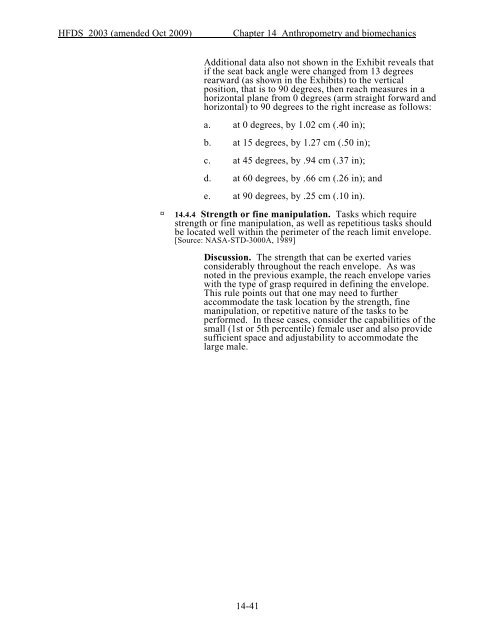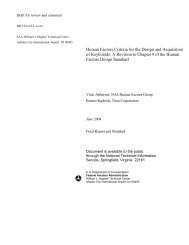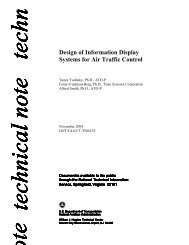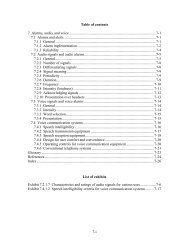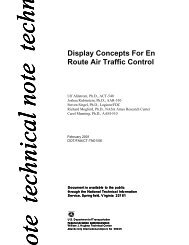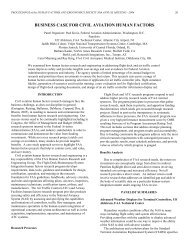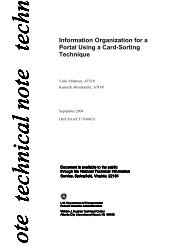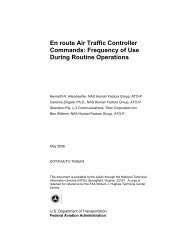Chapter 14. Anthropometry and Biomechanics - FAA
Chapter 14. Anthropometry and Biomechanics - FAA
Chapter 14. Anthropometry and Biomechanics - FAA
Create successful ePaper yourself
Turn your PDF publications into a flip-book with our unique Google optimized e-Paper software.
HFDS 2003 (amended Oct 2009)<strong>Chapter</strong> 14 <strong>Anthropometry</strong> <strong>and</strong> biomechanicsAdditional data also not shown in the Exhibit reveals thatif the seat back angle were changed from 13 degreesrearward (as shown in the Exhibits) to the verticalposition, that is to 90 degrees, then reach measures in ahorizontal plane from 0 degrees (arm straight forward <strong>and</strong>horizontal) to 90 degrees to the right increase as follows:a. at 0 degrees, by 1.02 cm (.40 in);b. at 15 degrees, by 1.27 cm (.50 in);c. at 45 degrees, by .94 cm (.37 in);d. at 60 degrees, by .66 cm (.26 in); <strong>and</strong>e. at 90 degrees, by .25 cm (.10 in). <strong>14.</strong>4.4 Strength or fine manipulation. Tasks which requirestrength or fine manipulation, as well as repetitious tasks shouldbe located well within the perimeter of the reach limit envelope.[Source: NASA-STD-3000A, 1989]Discussion. The strength that can be exerted variesconsiderably throughout the reach envelope. As wasnoted in the previous example, the reach envelope varieswith the type of grasp required in defining the envelope.This rule points out that one may need to furtheraccommodate the task location by the strength, finemanipulation, or repetitive nature of the tasks to beperformed. In these cases, consider the capabilities of thesmall (1st or 5th percentile) female user <strong>and</strong> also providesufficient space <strong>and</strong> adjustability to accommodate thelarge male.14-41


